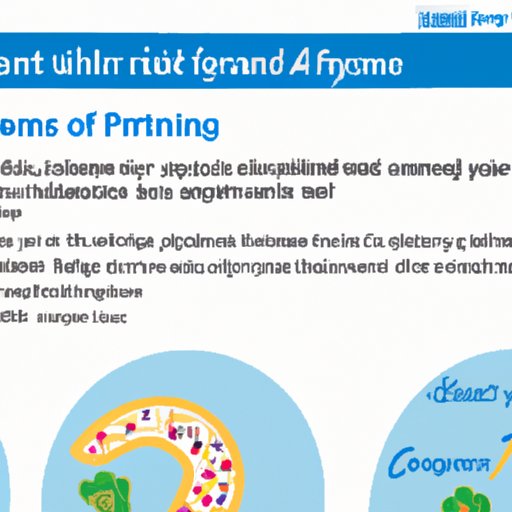Overview of an Anti-Inflammatory Diet
An anti-inflammatory diet is designed to reduce inflammation in the body. Chronic inflammation can lead to a variety of health issues, such as heart disease, diabetes, and obesity. By incorporating certain foods into your diet, you can reduce inflammation and improve your overall health.
Definition of Anti-Inflammatory Diet
An anti-inflammatory diet is a way of eating that focuses on whole, unprocessed foods that are rich in vitamins, minerals, antioxidants, and other nutrients. The diet emphasizes fruits and vegetables, healthy fats, lean proteins, and whole grains while limiting processed foods, sugar, and unhealthy fats.
Causes and Symptoms of Inflammation
Inflammation is a natural response of the body to protect itself from harm, but chronic inflammation can cause damage to the body over time. Common causes of inflammation include poor diet, lack of exercise, smoking, stress, and environmental toxins. Symptoms of inflammation include joint pain, fatigue, digestive issues, and skin problems.
Benefits and Risks of the Diet
Benefits
The benefits of following an anti-inflammatory diet include reducing inflammation, improving overall health, and preventing chronic diseases. According to a study published in the journal Nutrition Reviews, “A diet rich in plant-based foods and with fewer animal-based products has been associated with lower levels of inflammatory markers.”
Risks
Although the anti-inflammatory diet is generally safe, some people may experience side effects, such as headaches, fatigue, or constipation. It is important to talk to your doctor before starting any new diet. Additionally, if you have any existing health conditions, such as diabetes or heart disease, you should speak with your doctor before making any dietary changes.
Foods to Include in an Anti-Inflammatory Diet
Fruits and Vegetables
Fruits and vegetables are packed with vitamins, minerals, antioxidants, and fiber. They are essential for an anti-inflammatory diet. Try to incorporate a wide variety of colors into your meals, as each color represents different nutrients. Some of the best fruits and vegetables for an anti-inflammatory diet include leafy greens, berries, cruciferous vegetables, and citrus fruits.
Healthy Fats
Healthy fats, such as olive oil, avocados, and nuts, are important for an anti-inflammatory diet. These foods are rich in monounsaturated and polyunsaturated fatty acids, which can help reduce inflammation. Other sources of healthy fats include fatty fish, such as salmon and tuna, and flaxseed.
Whole Grains
Whole grains contain fiber and other important nutrients that can help reduce inflammation. Examples of whole grains include oats, quinoa, barley, buckwheat, and brown rice. Avoid refined grains, such as white bread, white rice, and pasta.
Lean Proteins
Lean proteins, such as poultry, eggs, tofu, and fish, are important for an anti-inflammatory diet. Plant-based proteins, such as beans, lentils, and nuts, are also good sources of protein. Avoid processed meats, such as bacon, sausage, and hot dogs.
Spices and Herbs
Spices and herbs are rich in antioxidants and can help reduce inflammation. Some of the best spices and herbs for an anti-inflammatory diet include turmeric, ginger, garlic, cinnamon, cayenne pepper, oregano, and rosemary.
Other Foods
In addition to the above foods, there are other foods that can help reduce inflammation. These include green tea, dark chocolate, and bone broth.
Sample Meal Plans for an Anti-Inflammatory Diet
Breakfast
Start your day with a breakfast that includes anti-inflammatory foods. Try oatmeal topped with fresh berries and walnuts, or an egg omelet with spinach, tomatoes, and avocado.
Lunch
For lunch, try a salad made with leafy greens and a variety of colorful vegetables. Top it off with grilled chicken, salmon, or tofu and a drizzle of olive oil and vinegar.
Dinner
End your day with a dinner that includes a lean protein, a whole grain, and plenty of vegetables. Try roasted salmon with quinoa and steamed broccoli, or grilled chicken with brown rice and sautéed kale.
Tips for Sticking with an Anti-Inflammatory Diet
Make Time for Meal Prep
Meal prepping can help you stay on track with an anti-inflammatory diet. Plan out your meals and make a grocery list ahead of time so you have healthy options throughout the week.
Don’t Forget to Exercise
Exercise is an important part of an anti-inflammatory diet. Regular physical activity can help reduce inflammation and improve overall health. Aim for at least 30 minutes of moderate-intensity exercise most days of the week.
Find Support
It can be helpful to find support when trying to stick to an anti-inflammatory diet. Join an online community or find a friend or family member who is also interested in following the diet. This can help keep you motivated and accountable.
Be Mindful of Portion Sizes
It is important to be mindful of portion sizes when following an anti-inflammatory diet. Eating too much of any food can lead to weight gain and other health issues. Be sure to follow recommended serving sizes for each food group.
Eat Slowly
Eating slowly and mindfully can help you stay on track with an anti-inflammatory diet. Take your time to enjoy each bite and pay attention to how your body feels after eating. This can help you recognize when you are full and prevent overeating.
Drink Plenty of Water
Staying hydrated is important for an anti-inflammatory diet. Try to drink at least 8 glasses of water a day to stay hydrated and flush out toxins. You can also drink herbal teas and other calorie-free beverages.
Conclusion
An anti-inflammatory diet can help reduce inflammation and improve overall health. The diet emphasizes whole, unprocessed foods like fruits and vegetables, healthy fats, lean proteins, and whole grains. It is important to talk to your doctor before starting any new diet, and to be mindful of portion sizes and other tips for sticking with the diet.
(Note: Is this article not meeting your expectations? Do you have knowledge or insights to share? Unlock new opportunities and expand your reach by joining our authors team. Click Registration to join us and share your expertise with our readers.)
